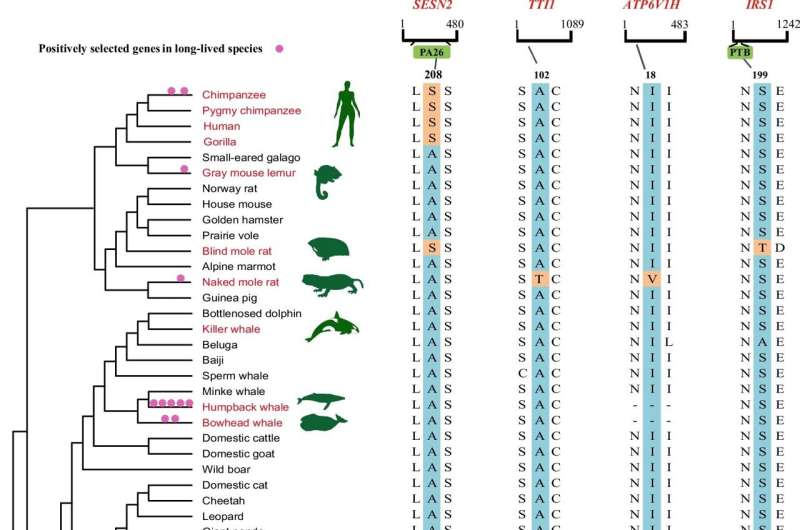August 23, 2023 report
This article has been reviewed according to Science X's and . have highlighted the following attributes while ensuring the content's credibility:
fact-checked
peer-reviewed publication
trusted source
proofread
Lessons in longevity from naked mole rats and bowhead whales

Researchers at Nanjing Normal University, China, have investigated the genetic underpinnings of mammalian longevity in search of new strategies to extend human lifespan.
In a paper titled "Evolutionary analysis of the mTOR pathway provide insights into lifespan extension across mammals," published in BMC Genomics, the team shares their findings of genes unique to long-lived species.
The researchers conducted an evolutionary analysis of 72 genes related to the mTOR network across 48 mammalian species to explore the mechanisms behind extended lifespans of certain animals. The mTOR network is part of at least two distinct multiprotein signaling pathways regulating cell growth and proliferation.
The analysis identified 20 genes with significant evolutionary signals unique to long-lived species. These included 12 positively selected genes, four convergent evolution genes, and five longevity-associated genes.
Five genes were associated with autophagy, which helps remove cellular waste and damaged components. This suggests that enhanced autophagy may be a required mechanism for extending lifespans.
Species were assessed by a longevity quotient that placed them in either a long-lived or control group. Of the 48 mammals in the study, 15 were classified as long-lived, including human, gorilla, chimpanzee, pygmy chimpanzee, gray mouse lemur, naked mole-rat, west Indian manatee, Brandt's bat, large-eared bat, big brown bat, blind mole rat, bowhead whale, killer whale, humpback whale, and Hoffmann's two-toed sloth.
Most animals have a scaling exponent for the relationship between lifespan and body mass. The 15 species selected exceed the expected lifespan for their body size. This pattern does not relate to longevity within a species.
The African Elephant ended up in the control group despite being the longest-lived non-human land mammal, along with horses, bears and rhinos because of their size. It is then unclear how orca makes the list as it is larger than the African elephant, with a comparable lifespan (~70 years) for female orca and less than half the lifespan (~30 years) for males.
The bowhead whale might have trouble exceeding the ratio as it can grow to 62 feet long and 200,000 pounds, but with a 200-year lifespan, it must be included in any longevity study.
At just over an ounce, the naked mole rat can live more than 37 years, 10 times longer than other rodents of similar size. Naked mole rats also seem to be cancer-proof, as a previous long-term study of 800 naked mole rats did not detect a single cancer incidence.
The study identified genes associated with long-lived species, which may provide a starting point for future research to extend human lifespans. How far science can push the limits of longevity might depend on advances in gene therapy and how well we learn the secrets of naked mole rats and bowhead whales.
More information: Fei Yang et al, Evolutionary analysis of the mTOR pathway provide insights into lifespan extension across mammals, BMC Genomics (2023).
Journal information: BMC Genomics
© 2023 Science X Network



















